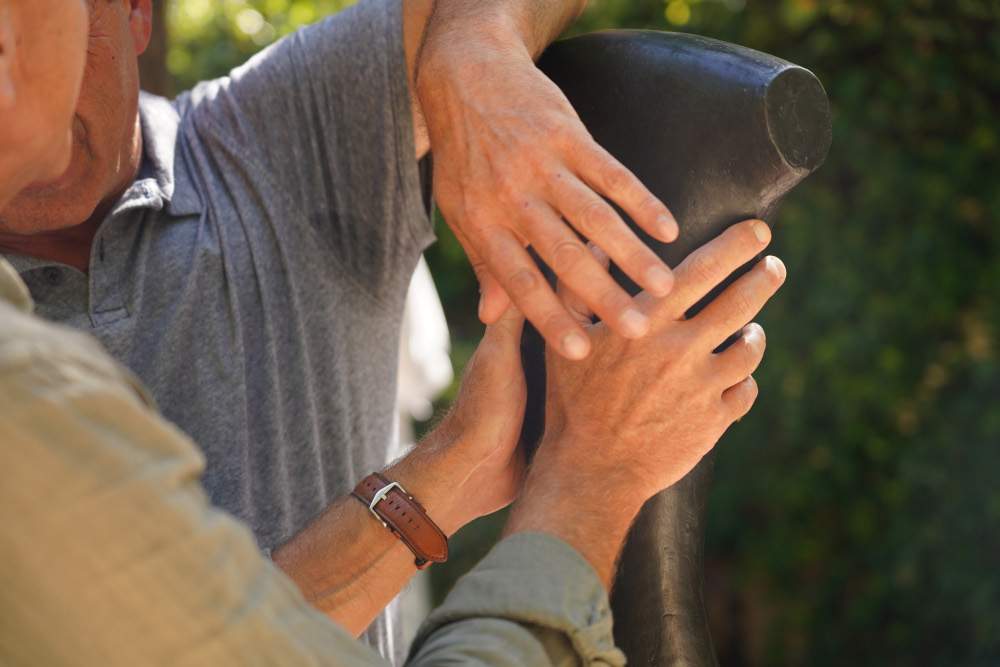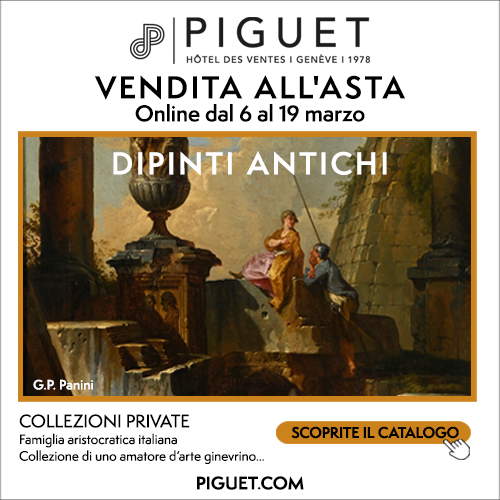Tactile guided tours exploring the collection return to the Peggy Guggenheim Collection
Due to the pandemic, for the past three years, the project Double Sense. Tactile Routes at the Peggy Guggenheim Collection stopped, but today, thanks to the invaluable support of Florim, a famous Italian ceramics company that has made sustainability its key to development and since 2015 part of Guggenheim Intrapresae, the project starts again with an important new feature.
Thanks to the latter, the Peggy Guggenheim Collection has made its artistic heritage even more accessible, creating a path of accessibility and starting a process of raising awareness of art through touch. Over the years, through a series of guided tours, adults and children with visual impairments have been led to discover some of the masterpieces preserved in the museum collections, reproduced in thermoform and resin, with a matrix made by hand at the Educational Materials Center of the Fondazione Istituto ciechi di Milano.
The appointment includes a tactile visit with Valeria Bottalico, creator and curator of the project, and a workshop led by blind artist Felice Tagliaferri. The museum provides a catalog that collects tactile reproductions of several works in the collection accompanied by their respective descriptive data sheets, in Italian and English, written in Braille and in highly readable characters. A kit always available free of charge at the Collection’s ticket office, visible to the public upon request, and supporting a visit conducted in total autonomy.
Beginning Sept. 15, Giuseppe Capogrossi’s Surface 236 (1957), Giorgio de Chirico’s Nostalgia of the Poet (1914), Vasily Kandinsky’s Toward the Top (1929), Fernand Léger’s Men in the City (1919), and René Magritte’s The Voice of Air (1931) will be exhibited within the permanent collection rooms with their respective tactile reproductions. The tactile journey includes sculptures by Max Ernst and Alberto Giacometti, explored in the original, following an assessment of the works’ state of conservation and their legibility by touch. Depending on the various rearrangements of the collection, the catalog available to the public with visual impairments will supplement the tour with tactile reproductions and guidance for exploring masterpieces by artists such as Paul Klee, Piet Mondrian, and Pablo Picasso.
“Since its inception, Doppio Senso has established itself as an innovative and experimental museum accessibility pathway aimed at blind, visually impaired and sighted people, both adults and children, designed and implemented from an inclusive perspective,” said Peggy Guggenheim Collection Director Karole P. B. Vail, "a path aimed at the formation of an increasingly broader community that participates in museum life and thus aimed at the dissemination of modern art, as well as the promotion of the social and educational role of the museum itself’. Making the restart of Doppio Senso possible was Florim, the first ceramic industry in Italy to be a Benefit Company and the only one in the world B Corp Certified, which through the CEDIT - Ceramiche d’Italia brand has created Hotel Chimera: a ceramic work of art composed of eighty unique pieces, designed by designer and artist Elena Salmistraro, whose proceeds from the sale went entirely to support the Doppio Senso project.
“We believe that art and beauty can be within the reach of everyone, even the weakest. We are very proud to have taken part in this project that confirms the importance of the relationship between business and museum, art and design,” adds Claudio Lucchese, Florim President.
Visits and workshops will resume in the fall, according to the schedule to follow, and will be aimed at the blind, visually impaired and sighted public in an inclusive way. Taking place once a month, they are free of charge, subject to availability.
For info and reservations: doppiosenso@guggenheim-venice.it; https://www.guggenheim-venice.it/
Image: Double Sense. Tactile Pathways at the Peggy Guggenheim Collection. Photo by Fei Xu
 |
| Tactile guided tours exploring the collection return to the Peggy Guggenheim Collection |
Warning: the translation into English of the original Italian article was created using automatic tools. We undertake to review all articles, but we do not guarantee the total absence of inaccuracies in the translation due to the program. You can find the original by clicking on the ITA button. If you find any mistake,please contact us.





























